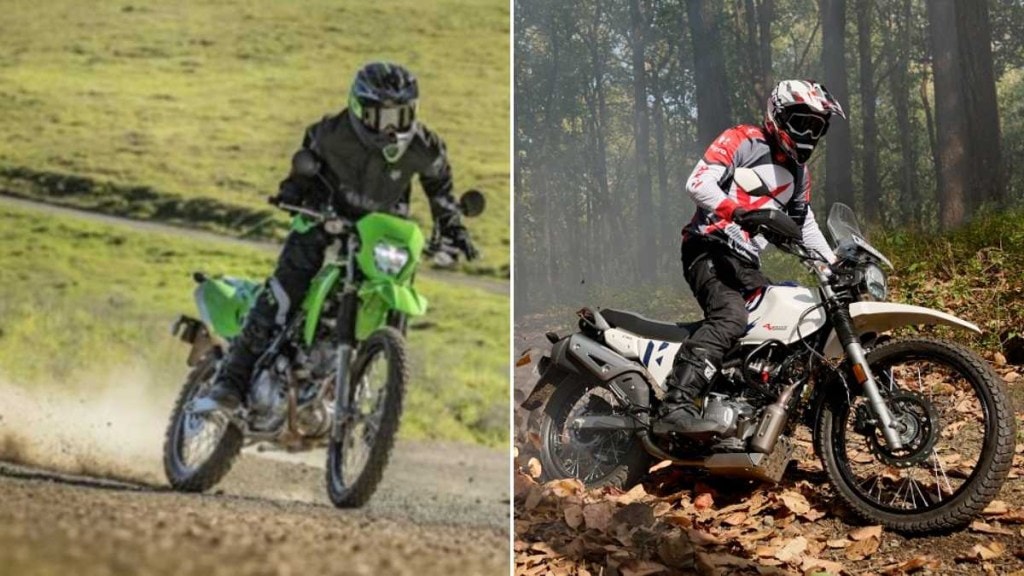The entry-level off-road capable motorcycle segment has been dominated by the Hero Xpulse 200 for a while now. The motorcycle was a capable off-roader right out of the showroom floor and for those interested in having a hardcore off-roader, Hero offered the Rally kit with longer suspension and other bits.
Now, Kawasaki wants in as well, with the launch of the KLX 230, which is also focused on being an off-road-focused motorcycle. Kawasaki has a lineup of hardcore dirt bikes in the form of the KX-series, but the KLX 230 is a mellowed-down dirt bike with city manners. So how do the two compare against each other? Let’s take a look.
Kawasaki KLX 230 vs Hero Xpulse 200 4V — Features and hardware
Let’s start with the KLX 230. The Japanese machine gets traditional telescopic forks, a monoshock at the rear, 21-inch front and 18-inch rear tyres, an LCD instrument console with phone connectivity, disc brakes at both ends, and ABS. The Hero Xpulse 200 also gets similar equipment but with changes like less ground clearance, lower seat height, larger front brake, etc.
| Features | KLX 230 | Xpulse 200 |
| Suspension (F) | Telescopic 240 mm travel | Telescopic 190 mm travel |
| Suspension (R) | Monoshock 250 mm travel | Monoshock 170 mm travel |
| Brakes (F) | 265 mm disc | 276 mm |
| Brakes (R) | 220 mm disc | 220 mm |
| Tyre (F) | 21-inch | 21-inch |
| Tyre (R) | 18-inch | 18-inch |
| Seat Height | 880 mm | 825 mm |
| Ground Clearance | 265 mm | 220 mm |
| Weight | 139 kg | 169 kg |
| Fuel Capacity | 7.6-litres | 13-litres |
Kawasaki KLX 230 vs Hero Xpulse 200 4V — Engine specifications
The Kawasaki KLX 230 is powered by a 233cc, air-cooled single-cylinder engine mated to a six-speed gearbox, while the Hero Xpulse is powered by a 199cc, single-cylinder air-cooled unit. The Xpulse is mated to a five-speed gearbox.
| Specifications | KLX 230 | Xpulse 200 |
| Displacement | 233 cc | 199 cc |
| Power | 17.5 bhp | 18.9 bhp |
| Torque | 18.3 Nm | 17.3 Nm |
| Gearbox | 6-speed | 5-speed |
| Price | In December | Rs 1.47 lakh |
In terms of numbers, the Xpulse makes marginally more power while the Kawasaki makes marginally more torque. The Kawasaki has the weight advantage here, weighing 139kg while the Xpulse tips the scale at 161kg, giving the KLX 230 an edge off-road. However, the Kawasaki has a smaller 7.6-litre fuel tank compared to the Xpulse’s 13-litre tank.
